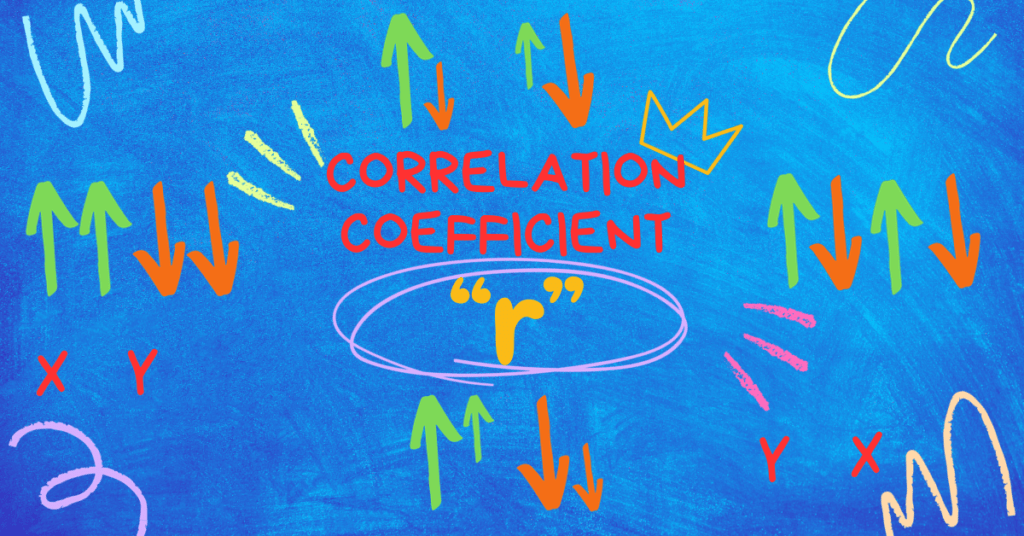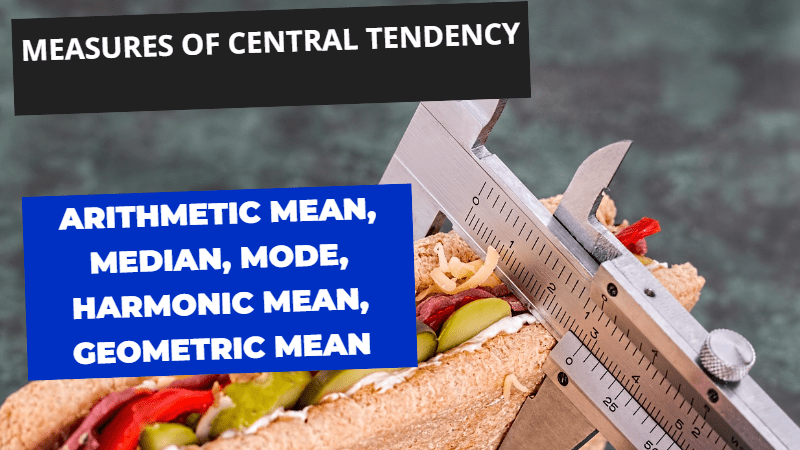In this post, we are going to discuss, Statistics I HSSC I FBISE Solved Paper 2010, MCQS, Short Questions, Extensive Questions. Solved Paper of 2008, Paper of 2009 are already published on the website. If you want to read the solved papers of Business Statistics ICOM II of FBISE, BISELHR, BISERWP and other boards, just explore the resource of the site. All the papers and reading resource including solved papers from intermediate, O, A level, graduation and masters level is given the website.
Table of Contents
Statistics I HSSC I FBISE Solved Paper 2010, MCQS, Short Questions, Extensive Questions
Solved by Iftikhar Ali M.Sc. Economics, MCOM Finance Lecturer Statistics, Finance & Accounting
MCQS
| Q.1 Circle the Correct Option i.e. A/B/C/D. Each Part Carries 1 Mark. | |||||
| (i) | Students divided into different groups according to their intelligence and gender will generate: | ||||
| A. Qualitative data | B. Quantitative data | C. Continuous data | D. Constant | ||
| (ii) | In a statistical table row captions are called: | ||||
| A. Box Head | B. Stub | C. Body | D. Title | ||
| (iii) | We must arrange the data before calculating: | ||||
| A. Mean | B. Median | C. Mode | D. Geometric Mean | ||
| (iv) | The Geometric Mean of a series of 4 items is 10.2. The product of all the items shall be: | ||||
| A. 10000 | B. 10824.3216 | C. 1001.20 | D. 10004 | ||
| (v) | The mean deviation of the scores 12, 15, 18 is: | ||||
| A. 6 | B. 0 | C. 3 | D. 2 | ||
| (vi) | Which of the following is negatively skewed?: | ||||
| A. Mean = Median = Mode | B. Mean > Median > Mode | C. Mean < Median < Mode | D. Q1 – Median > Median | ||
| (vii) | In fixed base method, the base period should be: | ||||
| A. Far away | B. Abnormal | C. Normal | D. Unreliable | ||
| (viii) | In Laspeyre’s Price index the quantities used as weight relate to: | ||||
| A. Current year | B. Base year | C. Both A & B | D. None of these | ||
| (ix) | If y = 2 + 0.6x, then the slope is: | ||||
| A. 2 | B. 0.6 | C. 1.2 | D. Zero | ||
| (x) | Which of the following can never be taken as coefficient of correlation? | ||||
| A. 0 | B. -0.99 | C. 0.05 | D. \[ \sqrt 3\ \] | ||
| (xi) | When byx is positive, then bxy will be: | ||||
| A. Negative | B. Positive | C. Zero | D. One | ||
| (xii) | The systematic components of time series which follow regular pattern of variations are called: | ||||
| A. Noise | B. Model | C. Signal | D. None of these | ||
| (xiii) | Which of the following is an example of irregular variation?: | ||||
| A. Production of wheat from 1980-1997 | B. Sale of room-coolers during summer | C. Births by hours of day | D. Sudden causes of war | ||
| (xiv) | Standard deviation is independent of change of: | ||||
| A. Origin | B. Scale | C. Origin & Scale | D. None of these | ||
| (xv) | What is the process of arranging data into rows and columns called?: | ||||
| A. Classification | B. Tabulation | C. Ogive | D. Array | ||
| (xvi) | A statistic which is not measurable is called | ||||
| A. Constant | B. Attribute | C. Variable | D. Parameter | ||
| (xvii) | If the third moment about mean is zero then the distribution is: | ||||
| A. Positive skewed | B. Negative skewed | C. Symmetrical | D. None of these | ||
Short Questions
SECTION-B
Q.2 Attempt any fourteen parts.
(i) Write briefly the importance of statistics in different fields.
Answer:
Statistics is one of the major subject specifically in current era because of the major role playing in data science. It calculates and describe the whole picture of the economy of the individual, country or any business even of the world. It studies variables. Variables are used in each and every sector of life such as health, education such as Physics, Chemistry, Mathematics, Social sciences etc. With the help of variables, one can understand the behavior of interest. Simply no sector can imagine to live without statistics.
(ii) Differentiate between Discrete and continuous variable.
Answer:
A variable which can assume only some specific values within a given range is called discrete variable. For e.g. Number of students in a class, Number of houses in a street, number of children in a family etc. it can’t occur in decimal. A variable which can assume any value within a given range is called a continuous variable. For example age of persons, speed of car, temperature, height, etc.
(iii) Define classification.
Answer:
Classification is simply the conversion of ungrouped data into grouped data or it is simply present the data into rows & columns or in tabular form having rows and columns.
(iv)What are the requisites of a good statistical table?
Answer:
1. Table number: A table should always be numbered for easy identification and reference in future
2. Title of the table: A table must have a suitable title.
3. Caption: Caption refers to the column headings.
4. Stubs: These refer to the headings of horizontal rows.
5. Body: The body of the table contains the numerical information.
6. Head Note: It is a brief explanatory statement applying to all or a major part of the material in the table, and in placed below the title and enclosed in brackets.
7. Footnote: Anything in a table that the reader may find difficult to understand form the title, captions and stubs should be explained in footnotes.
(v)Write down the class boundaries, mid points and class width for each of the following classes:
| (a) | 8–12 | 13–17 |
| (b) | 2.5—3.4 | 3.5—4.4 |
| (c) | -3–+3 | 4–10 |
Solution
(a)
| Classes | Class Boundaries | Class Mark X | Width |
| 8—12 | 7.5—12.5 | 10 | 5 |
| 13–17 | 12.5—17.5 | 15 |
(b)
| Classes | Class Boundaries | Class Mark X | Width |
| 2.5 — 3.4 | 2.45 — 3.45 | 2.95 | 1 |
| 3.5 -– 4.4 | 3.45 — 4.45 | 3.95 |
(C)
| Classes | Class Boundaries | Class Mark X | Width |
| -3 — 3 | -3.5 — 3.5 | 0 | 7 |
| 4 -– 10 | 3.5 — 10.5 | 7 |
(vi) Define Mean, Median and Mode. Give two methods of calculating mean?
Solution:
All these are different types of averages.
“Arithmetic mean is quotient of sum of the given values and number of the given values”
“Median is the most middle/central value in the arrayed data”.
Mode is most repeated value of the data”
Methods to calculate A.M
\[ \mathbf{A}\mathbf{.}\mathbf{M}\mathbf{\ }\overline{\mathbf{X}}\mathbf{\ }\mathbf{Direct}\mathbf{\ }\mathbf{Method}\mathbf{= \ }\frac{\mathbf{\sum}\mathbf{x}}{\mathbf{n}}\ \]
\[ \mathbf{A}\mathbf{.}\mathbf{M}\mathbf{\ }\overline{\mathbf{X}}\mathbf{\ }\mathbf{Indirect}\mathbf{\ }\mathbf{Method}\mathbf{=}\mathbf{A}\mathbf{+ \ }\frac{\mathbf{\sum}\mathbf{D}}{\mathbf{n}}\ \]
(vii) The mean of 3 groups, each containing ten values, are 10, 20 and 30. Find mean of all thirty values.
Solution
\[ \overline{\mathbf{X}}\mathbf{c}\mathbf{=}\frac{\mathbf{n1}\overline{\mathbf{X}}\mathbf{1}\mathbf{+}\mathbf{n2}\overline{\mathbf{X}}\mathbf{2}\mathbf{+}\mathbf{n3}\overline{\mathbf{X}}\mathbf{3}}{\mathbf{n1}\mathbf{+}\mathbf{n2}\mathbf{+}\mathbf{n3}}\mathbf{= \ }\frac{\left( \mathbf{10} \right)\mathbf{(10) +}\mathbf{(10)}\mathbf{(20) +}\mathbf{(10)}\mathbf{(30)}}{\mathbf{10}\mathbf{+}\mathbf{10}\mathbf{+}\mathbf{10}}\mathbf{=}\frac{\mathbf{100}\mathbf{+}\mathbf{200}\mathbf{+}\mathbf{300}}{\mathbf{30}}\mathbf{=}\frac{\mathbf{600}}{\mathbf{30}}\mathbf{= 20}\ \]
(viii) Write down the properties of arithmetic mean.
Solution
\[ (i)\;\sum(X-\overline X)=0,\;\sum f((X-\overline X)=0 \]
\[ (ii)\;{\sum(X-\overline X)}^2\;<{\sum(X-A)}^2,\;{\sum f(X-\overline X)}^2\;<{\sum f(X-A)}^2 \]
\[ (iii)\;\overline Xc=\frac{\overline X1n1+\overline X2n2+\overline X3n3….\overline Xknk}{n1+n2+n3+….nk} \]
(ix) The Mean of ten values is 8; if a new value is included the mean becomes 9. Find the value of n.
Solution
\[ \overline{\mathbf{X}}\mathbf{=}\frac{\mathbf{\sum x}}{\mathbf{n}}\ \]
\[ \mathbf{8 =}\frac{\mathbf{\sum x}}{\mathbf{10}}\ \]
\[ \mathbf{\sum x = 8\ }\mathbf{\times}\mathbf{\ 10 = 80}\ \]
\[ \overline{\mathbf{X}}\mathbf{=}\frac{\mathbf{\sum x}}{\mathbf{n}}\ \]
\[ \mathbf{9 =}\frac{\mathbf{\sum x}}{\mathbf{11}}\ \]
\[ \mathbf{\sum x = 9\ }\mathbf{\times}\mathbf{\ 11 = 99}\ \]
(x) Define dispersion, Mean deviation and standard deviation..
Solution
Dispersion is a measure of scatteredness or dispersement of the data. Broadly there are two types of dispersion one is called absolute dispersion which measures the dispersion in absolute terms and another is relative dispersion which measures the dispersion in relative terms.
Mean deviation and standard deviation both are absolute measures of dispersion.
(xi) Define skewness, positive skewness and negative skewness:
Answer:
Skewness is a measure of asymmetry. A distribution may has zero skewness, possitive skewness or negative skewness.
No skewness if Mean = Median = Mode
Positive skewness = Mean > Median > Mode
Negative Skewness = Mean < Median < Mode
(xii) Find Bowley’s Coefficient of skewness given.
Q1 = 53.67, Median = 65, Q3 = 76.33. Also comment about the result.
Solution:
\[ \mathbf{Bowle}\mathbf{y}^{\mathbf{‘}}\mathbf{s\ \ Co.\ Skewnes = \ }\frac{\mathbf{Q}\mathbf{3 + Q}\mathbf{1 – 2}\mathbf{Meian}}{\mathbf{Q}\mathbf{3 – Q}\mathbf{1}}\mathbf{=}\frac{\mathbf{76.33 + 53.67 – 2(65)}}{\mathbf{76.33 – 53.67}}\mathbf{=}\frac{\mathbf{130 – 130}}{\mathbf{22.66}}\mathbf{= 0}\ \]
Bowley’s Coefficient of Skewness is 0. It means that mean = median = mode and there is no skewness but it is a symmetrical data.
(xiii) Given ∑x = 180, S² = 36 and n = 5. Find ∑x².
Answer:
\[ \mathbf{S² =}\frac{\mathbf{\sum x²}}{\mathbf{n}}\mathbf{- \ }\left( \frac{\mathbf{\sum x}}{\mathbf{n}} \right)^{\mathbf{2\ }}\ \]
\[ \mathbf{36 =}\frac{\mathbf{\sum x²}}{\mathbf{5}}\mathbf{- \ }\left( \frac{\mathbf{180}}{\mathbf{5}} \right)^{\mathbf{2\ }}\ \]
\[ \mathbf{36 =}\frac{\mathbf{\sum x²}}{\mathbf{5}}\mathbf{- \ 1296}\ \]
\[ \frac{\mathbf{\sum x²}}{\mathbf{5}}\mathbf{= 36 + 1296}\ \]
\[ \frac{\mathbf{\sum x²}}{\mathbf{5}}\mathbf{= 1332}\ \]
\[ \mathbf{\sum}\mathbf{x}^{\mathbf{2}}\mathbf{= \ 1332\ }\mathbf{\times}\mathbf{\ 5 = 6660}\ \]
(xiv) Define Index number. Differentiate between simple and composite index numbers.
Answer
Index Number is a statistical measure to calculate the percentage change in price or quantity of a single product or multiple products. If there is a single product then index number is called simple index. If there are more than one product then index number is called composite index number.
(xv) Given ∑poqo=3600, ∑p1qo=4300, ∑poq1=4100 and ∑p1q1=4890. Find Fisher’s Ideal Index number.
Solution:
\[ \mathbf{Fishe}\mathbf{r}^{\mathbf{‘}}\mathbf{s\ Ideal\ Index = \ }\sqrt{\left\lbrack \frac{\mathbf{\sum p}\mathbf{1}\mathbf{qo}}{\mathbf{\sum poqo}}\mathbf{\ }\mathbf{\times}\frac{\mathbf{\sum p}\mathbf{1}\mathbf{q}\mathbf{1}}{\mathbf{\sum poq}\mathbf{1}} \right\rbrack}\mathbf{\ }\mathbf{\times}\mathbf{\ 100\ }\ \]
\[ \mathbf{Fishe}\mathbf{r}^{\mathbf{‘}}\mathbf{s\ Ideal\ Index = \ }\sqrt{\left\lbrack \frac{\mathbf{4300}}{\mathbf{3600}}\mathbf{\ }\mathbf{\times}\frac{\mathbf{4890}}{\mathbf{4100}} \right\rbrack}\mathbf{\ }\mathbf{\times}\mathbf{\ 100}\ \]
\[ \mathbf{Fishe}\mathbf{r}^{\mathbf{‘}}\mathbf{s\ Ideal\ Index = \ }\sqrt{\left\lbrack \mathbf{1.195\ }\mathbf{\times}\mathbf{1.1926} \right\rbrack}\mathbf{\ }\mathbf{\times}\mathbf{\ 100}\ \]
\[ \mathbf{Fishe}\mathbf{r}^{\mathbf{‘}}\mathbf{s\ Ideal\ Index = 1.1937\ }\mathbf{\times}\mathbf{\ 100 = 119.37}\ \]
(xvi) Define Correlation, Positive Correlation and Negative Correlation.
Solution:
Correlation is a relationship or dependency that exists between two variables.
If a correlation exists, it is said that the variables are correlated or there is a correlation between them. It is denoted by “r” and it is always ranges -1≤ r ≤ +1
- Positive Correlation
A positive correlation occurs when an increase in one variable increases the other variable or vice versa. The line corresponding to the scatter plot is an increasing line. In positive correlation r ranges between 0 & 1.
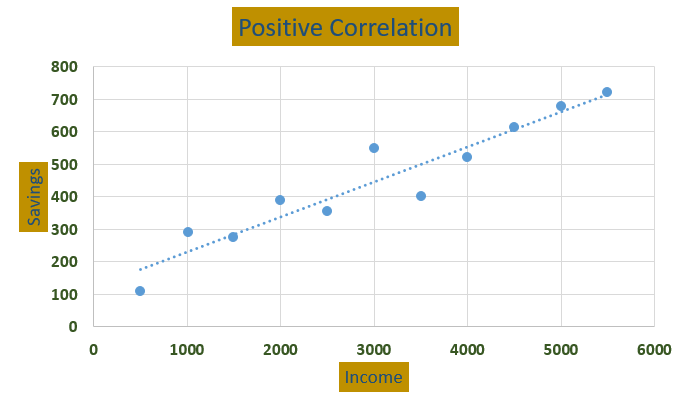
- Negative Correlation
A negative correlation occurs when an increase in one variable decreases the other or vice versa. The line corresponding to the scatter plot is a decreasing line. In negative correlation r ranges between -1 & 0.
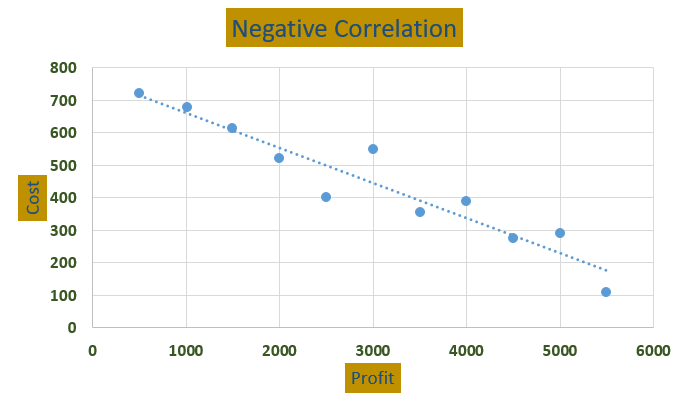
(xvii) The equations of two regression lines obtained from ten observations are 10X = 5Y – 55 and 100Y = 200X + 1180. Find the correlation coefficient between X and Y.
Solution:
\[ \mathbf{100Y\ = \ 200X\ + \ 1180}\ \]
\[ \frac{\mathbf{100Y}}{\mathbf{100}}\mathbf{\ =}\frac{\mathbf{200X}}{\mathbf{100}}\mathbf{\ +}\frac{\mathbf{1180}}{\mathbf{100}}\mathbf{= Y = 2X + 11.8}\ \]
\[ \textbf{so byx is = 2} \]
\[ \textbf{10X = 5Y – 55} \]
\[ \frac{\mathbf{10X}}{\mathbf{10}}\mathbf{\ =}\frac{\mathbf{5Y}}{\mathbf{10}}\mathbf{-}\frac{\mathbf{55}}{\mathbf{10}}\mathbf{= X = 0.5Y + 5.5}\ \]
\[ \textbf{so bxy is = 0.5} \]
\[ \mathbf{rxy = \ }\sqrt{\mathbf{byx\ }\mathbf{\times}\mathbf{bxy}}\ \]
\[ \mathbf{rxy = \ }\sqrt{\mathbf{2\ }\mathbf{\times}\mathbf{\ 0.5}}\ \]
\[ \mathbf{rxy = \ 1}\ \]
(xviii) Differentiate between Regression and Correlation; Perfect Positive and Perfect Negative correlation.
Solution:
Correlation is a statistical measure to calculate the relationship between two variables and indicates the strength of relationship also. Regression shows the change in dependent variable caused by the change in one unit of independent variable.
Perfectly positive correlation has always answer +1 and it means that if one variable increases or decreases, other also has same proportionate change in it.
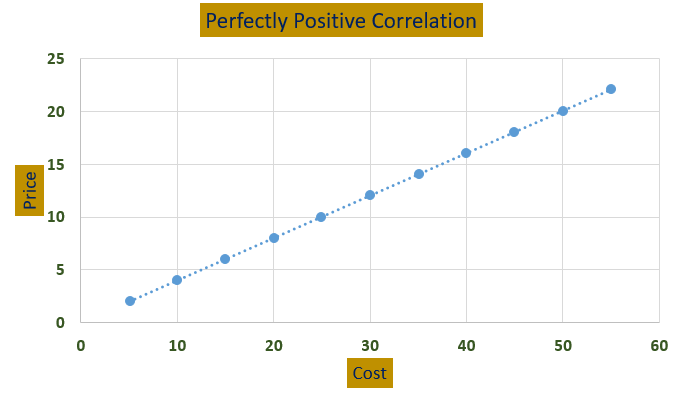
Perfectly Negative correlation has always answer -1 and it means that if one variable increases or decreases, other moves proportionately in opposite direction.
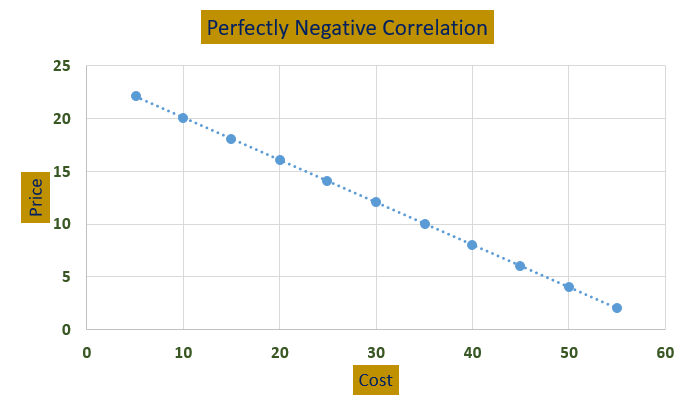
(xviv) What are the various methods of measuring Secular trend in a time series?
Answer:
We can calculate secular trend through four types of methods:
- Method of free hand curve.
- Method of semi-average.
- Method of moving average.
- Method of Least-Squares.
Extensive Questions
Section C
Q.3 (a) Find Mean, Median and G.M from the following data:
| Marks | 10–25 | 25–40 | 40–55 | 55–70 | 70–85 | 85–100 |
| f | 6 | 20 | 44 | 26 | 3 | 1 |
Solution (a)
| Classes | f | X | fX | logX | flogX | C.f |
| 10–25 | 6 | 17.5 | 105 | 1.24304 | 7.45823 | 6 |
| 25–40 | 20 | 32.5 | 650 | 1.51188 | 30.2377 | 26 |
| 40–55 | 44 | 47.5 | 2090 | 1.67669 | 73.7745 | 70 |
| 55–70 | 26 | 62.5 | 1625 | 1.79588 | 46.6929 | 96 |
| 70–85 | 3 | 77.5 | 232.5 | 1.8893 | 5.66791 | 99 |
| 85–100 | 1 | 92.5 | 92.5 | 1.96614 | 1.96614 | 100 |
| 100 | 4795 | 165.797 | ||||
| ∑f = | ∑fX= | ∑flogX= |
\[ \mathbf{A.M\ }\overline{\mathbf{X}}\mathbf{=}\frac{\mathbf{\sum fx}}{\mathbf{\sum f}}\mathbf{\ =}\frac{\mathbf{4795}}{\mathbf{100}}\mathbf{\ = 47.95}\ \]
\[ \mathbf{Median = L +}\frac{\mathbf{h}}{\mathbf{f}}\left( \frac{\mathbf{n}}{\mathbf{2}}\mathbf{- C} \right)\mathbf{= 40 +}\frac{\mathbf{15}}{\mathbf{44}}\left( \mathbf{50 – 26} \right)\mathbf{= 40 +}\frac{\mathbf{360}}{\mathbf{44}}\mathbf{= 48.18}\ \]
\[ \frac{\mathbf{n}}{\mathbf{2}}\mathbf{=}\frac{\mathbf{100}}{\mathbf{2}}\mathbf{= 50\ so\ model\ class\ is\ 40 – 55}\ \]
\[ \mathbf{G.M = Antilog}\left( \frac{\mathbf{\sum flogx}}{\mathbf{\sum f}} \right)\mathbf{\ = Antilog\ }\frac{\mathbf{165.797}}{\mathbf{100}}\mathbf{\ = Antilog\ 1.65797 = 45.4957}\ \]
(b) In a certain distribution the first four moments about x = 5 are 2, 20, 40 and 50. Show that mean is 7, variance is 16 and the 3rd mean moment is – 64. Is the distribution positively or negatively skewed.
Solution:
(i) \[ \overline{\mathbf{X}}\mathbf{= A + \ }\frac{\mathbf{\sum fD}}{\mathbf{\sum f}}\mathbf{\ Where}\frac{\mathbf{\sum fD}}{\mathbf{\sum f}}\mathbf{\ is\ 1}\mathbf{st\ moment\ which\ is = 2\ and\ A\ is\ 5\ so:\ \ }\ \]
\[ \overline{\mathbf{X}}\mathbf{= 5 + \ 2 = 7}\ \]
(ii) Second moment is:
\[ \mathbf{m}\mathbf{2 =}\mathbf{m}^{\mathbf{̕}}\mathbf{2 – \ }\mathbf{(m}^{\mathbf{̕}}\mathbf{1)² = 20 -}\left( \mathbf{2} \right)^{\mathbf{2}}\mathbf{= 16}\ \]
\[ \textbf{Second moment is always equal to variance.} \]
(iii) Third Moment is:
\[ \mathbf{m}\mathbf{3 =}\mathbf{m}^{\mathbf{̕}}\mathbf{3 – \ 3}{\mathbf{m}^{\mathbf{̕}}\mathbf{1}\mathbf{m}^{\mathbf{̕}}\mathbf{2 + 2(m}}^{\mathbf{̕}}\mathbf{1)³ = 40 – 3}\left( \mathbf{2} \right)\left( \mathbf{20} \right)\mathbf{+ 2(2)³}\ \]
\[ \mathbf{40}\mathbf{- 120 + 16 = \ – 64}\ \]
Since 3rd moment is negative so distribution is negatively
Q.4 Construct the following weighted index number for 1981 on the basis of 1980:
(i) Laspayr’e Index
(ii) Paasche’s Index
(iii) Fisher’s Ideal Index
| Commodity | Prices | Quantities | ||
| 1980 | 1981 | 1980 | 1981 | |
| A | 10 | 12 | 20 | 22 |
| B | 8 | 8 | 16 | 18 |
| C | 5 | 6 | 10 | 11 |
| D | 4 | 5 | 7 | 8 |
Show Fisher’s Index is G.M of Laspeyre’s and Paasche’s Index.
Solution
| Article | 1980 | 1981 | ||||||
| Price (Po) | Quantity (qo) | Price (P1) | Quantity (q1) | poqo | p1qo | p1q1 | poq1 | |
| A | 10 | 20 | 12 | 22 | 200 | 240 | 264 | 220 |
| B | 8 | 16 | 8 | 18 | 128 | 128 | 144 | 144 |
| C | 5 | 10 | 6 | 11 | 50 | 60 | 66 | 55 |
| D | 4 | 7 | 5 | 8 | 28 | 35 | 40 | 32 |
| Sum | 406 | 463 | 514 | 451 | ||||
| ∑poqo = | ∑p1qo = | ∑p1q1 = | ∑poq1 = | |||||
\[ \mathbf{Laspeyr}\mathbf{e}^{\mathbf{‘}}\mathbf{s\ Index\ 1981 =}\frac{\mathbf{\sum}\mathbf{p}_{\mathbf{1}}\mathbf{q}_{\mathbf{0}}}{\mathbf{\sum}\mathbf{p}_{\mathbf{0}}\mathbf{q}_{\mathbf{0}}}\mathbf{\times}\mathbf{\ 100}\ \]
\[ \mathbf{Laspeyr}\mathbf{e}^{\mathbf{‘}}\mathbf{s\ Index\ 1981 =}\frac{\mathbf{463}}{\mathbf{406}}\mathbf{\ }\mathbf{\times}\mathbf{\ 100 = \ 114.03}\ \]
\[ \mathbf{Paasch}\mathbf{e}^{\mathbf{‘}}\mathbf{s\ Index\ 1981 =}\frac{\mathbf{\sum}\mathbf{p}_{\mathbf{1}}\mathbf{q}_{\mathbf{1}}}{\mathbf{\sum}\mathbf{p}_{\mathbf{0}}\mathbf{q}_{\mathbf{1}}}\mathbf{\times}\mathbf{\ 100}\ \]
\[ \mathbf{Paasch}\mathbf{e}^{\mathbf{‘}}\mathbf{s\ Index\ 1981 =}\frac{\mathbf{514}}{\mathbf{451}}\mathbf{\times}\mathbf{\ 100 = 113.96}\ \]
\[ \mathbf{Fishe}\mathbf{r}^{\mathbf{‘}}\mathbf{s\ Ideal\ Index\ 1981 =}\sqrt{\mathbf{L}\mathbf{\times}\mathbf{P}}\ \]
\[ \mathbf{Fishe}\mathbf{r}^{\mathbf{‘}}\mathbf{s\ Ideal\ Index\ 1981 =}\sqrt{\mathbf{114.03}\mathbf{\times}\mathbf{113.96}}\ \]
\[ \mathbf{Fishe}\mathbf{r}^{\mathbf{‘}}\mathbf{s\ Ideal\ Index\ 1981 = 113.99}\ \]
Q.5 (a) Compute the coefficient of correlation between X and Y from the following data after calculating the missing values. The mean of X and Y series are 6 and 8 respectively.
| (X) | (Y) |
| 4 | 8 |
| 6 | 9 |
| ? | 5 |
| 2 | 11 |
| 8 | 7 |
Solution
\[ \overline{\mathbf{X}}\mathbf{=}\frac{\mathbf{\sum x}}{\mathbf{n}}\ \]
\[ \mathbf{6 =}\frac{\mathbf{\sum x}}{\mathbf{5}}\ \]
\[ \mathbf{\sum x = 6\ }\mathbf{\times}\mathbf{\ 5 = 30}\ \]
\[ \mathbf{Missing\ X\ value = 30 -}\left( \mathbf{4 + 6 + 2 + 8} \right)\mathbf{= \ 30 – 20 = 10}\ \]
\[ \mathbf{So\ }\overline{\mathbf{X}}\mathbf{\ = \ 6,\ }\overline{\mathbf{Y}}\mathbf{\ = \ 8,\ n\ = \ 5}\ \]
| (X) | (Y) | X² | Y² | XY |
| 4 | 8 | 16 | 64 | 32 |
| 6 | 9 | 36 | 81 | 54 |
| 10 | 5 | 100 | 25 | 50 |
| 2 | 11 | 4 | 121 | 22 |
| 8 | 7 | 64 | 49 | 56 |
| 30 | 40 | 220 | 340 | 214 |
| ∑X = | ∑Y = | ∑X² = | ∑Y² = | ∑XY = |
\[ \mathbf{S}\mathbf{x}\mathbf{=}\sqrt{\left\lbrack \frac{\mathbf{\sum}\mathbf{x}^{\mathbf{2}}}{\mathbf{n}}\mathbf{-}\mathbf{\ }\left( \frac{\mathbf{\sum}\mathbf{x}}{\mathbf{n}} \right)^{\mathbf{2}} \right\rbrack}\ \]
\[ \mathbf{S}\mathbf{x}\mathbf{=}\sqrt{\left\lbrack \frac{\mathbf{220}}{\mathbf{5}}\mathbf{-}\mathbf{\ }\left( \frac{\mathbf{30}}{\mathbf{5}} \right)^{\mathbf{2}} \right\rbrack}\ \]
\[ \mathbf{Sx =}\sqrt{\mathbf{44 – 36}}\ \]
\[ \mathbf{S}\mathbf{x}\mathbf{=}\sqrt{\mathbf{8}}\ \]
\[ \mathbf{S}\mathbf{x}\mathbf{=}\mathbf{2.828}\ \]
\[ \mathbf{S}\mathbf{y}\mathbf{=}\sqrt{\left\lbrack \frac{\mathbf{\sum}\mathbf{y}^{\mathbf{2}}}{\mathbf{n}}\mathbf{-}\mathbf{\ }\left( \frac{\mathbf{\sum}\mathbf{y}}{\mathbf{n}} \right)^{\mathbf{2}} \right\rbrack}\ \]
\[ \mathbf{S}\mathbf{y}\mathbf{=}\sqrt{\left\lbrack \frac{\mathbf{340}}{\mathbf{5}}\mathbf{-}\mathbf{\ }\left( \frac{\mathbf{40}}{\mathbf{5}} \right)^{\mathbf{2}} \right\rbrack}\ \]
\[ \mathbf{Sy =}\sqrt{\mathbf{68 – 64}} \]
\[ \mathbf{S}\mathbf{y}\mathbf{=}\sqrt{\mathbf{4}}\ \]
\[ \mathbf{S}\mathbf{y}\mathbf{=}\mathbf{2}\ \]
\[ \mathbf{r}\mathbf{=}\frac{\frac{\mathbf{\sum}\mathbf{xy}}{\mathbf{n}}\mathbf{-}\mathbf{\ }\left( \frac{\mathbf{\sum}\mathbf{x}}{\mathbf{n}} \right)\left( \frac{\mathbf{\sum}\mathbf{y}}{\mathbf{n}} \right)}{\mathbf{S}\mathbf{x}\mathbf{\times S}\mathbf{y}}\ \]
\[ \mathbf{r}\mathbf{=}\frac{\frac{\mathbf{214}}{\mathbf{5}}\mathbf{-}\mathbf{\ }\left( \frac{\mathbf{30}}{\mathbf{5}} \right)\left( \frac{\mathbf{40}}{\mathbf{5}} \right)}{\left( \mathbf{2.828} \right)\mathbf{(}\mathbf{2}\mathbf{)}}\ \]
\[ \mathbf{r}\mathbf{=}\frac{\mathbf{42.8}\mathbf{\ }\mathbf{–}\mathbf{\ }\mathbf{48}}{\mathbf{5.656}}\ \]
\[ \mathbf{r}\mathbf{=}\frac{\mathbf{- 5.2}}{\mathbf{5.656}}\mathbf{=}\mathbf{- 0.919} \textbf{(Negative Correlation)} \]
(b) Compute 4 quartered centered moving average from the following data:
| Year | Quarter | |||
| I | II | III | IV | |
| 1977 | 102 | 71 | 47 | 98 |
| 1978 | 125 | 106 | 73 | 231 |
| 1979 | 281 | 229 | 209 | 488 |
Solution
| Year & Quarter | Values | 4 Quarter Moving Total | 2 Values Moving Total | 4 Quarter centered Moving Average |
| 1977 i | 102 | |||
| ii | 71 | |||
| 318 | ||||
| iii | 47 | 659 | 82.375 | |
| 341 | ||||
| iv | 98 | 711 | 88.875 | |
| 370 | ||||
| 1978 i | 125 | 766 | 95.75 | |
| 396 | ||||
| ii | 100 | 925 | 115.625 | |
| 529 | ||||
| iii | 73 | 1214 | 151.75 | |
| 685 | ||||
| iv | 231 | 1499 | 187.375 | |
| 814 | ||||
| 1979 i | 281 | 1764 | 220.5 | |
| 950 | ||||
| ii | 229 | 2157 | 269.625 | |
| 1207 | ||||
| iii | 209 | |||
| iv | 488 |
You may also interested in the following:
Statistics I HSSC I FBISE, Solved Paper 2009, MCQS, Short Questions, Extensive Questions
Statistics I HSSC I FBISE, Solved Paper 2008, MCQS, Short Questions, Extensive Questions
Business Statistics Solved Paper FBISE 2012 ICOM II, MCQS, Short Questions, Extensive Questions
Business Statistics Solved Paper FBISE 2013 ICOM II, MCQS, Short Questions, Extensive Questions
Business Statistics Solved Paper FBISE 2015 ICOM II, MCQS, Short Questions, Extensive Questions
Business Statistics Solved Paper FBISE 2016 ICOM II, MCQS, Short Questions, Extensive Questions
Business Statistics Solved Paper FBISE 2017 ICOM II, MCQS, Short Questions, Extensive Questions
Business Statistics Solved Paper FBISE 2018 ICOM II, MCQS, Short Questions, Extensive Questions
Introduction to Statistics Basic Important Concepts
Measures of Central Tendency, Arithmetic Mean, Median, Mode, Harmonic, Geometric Mean


